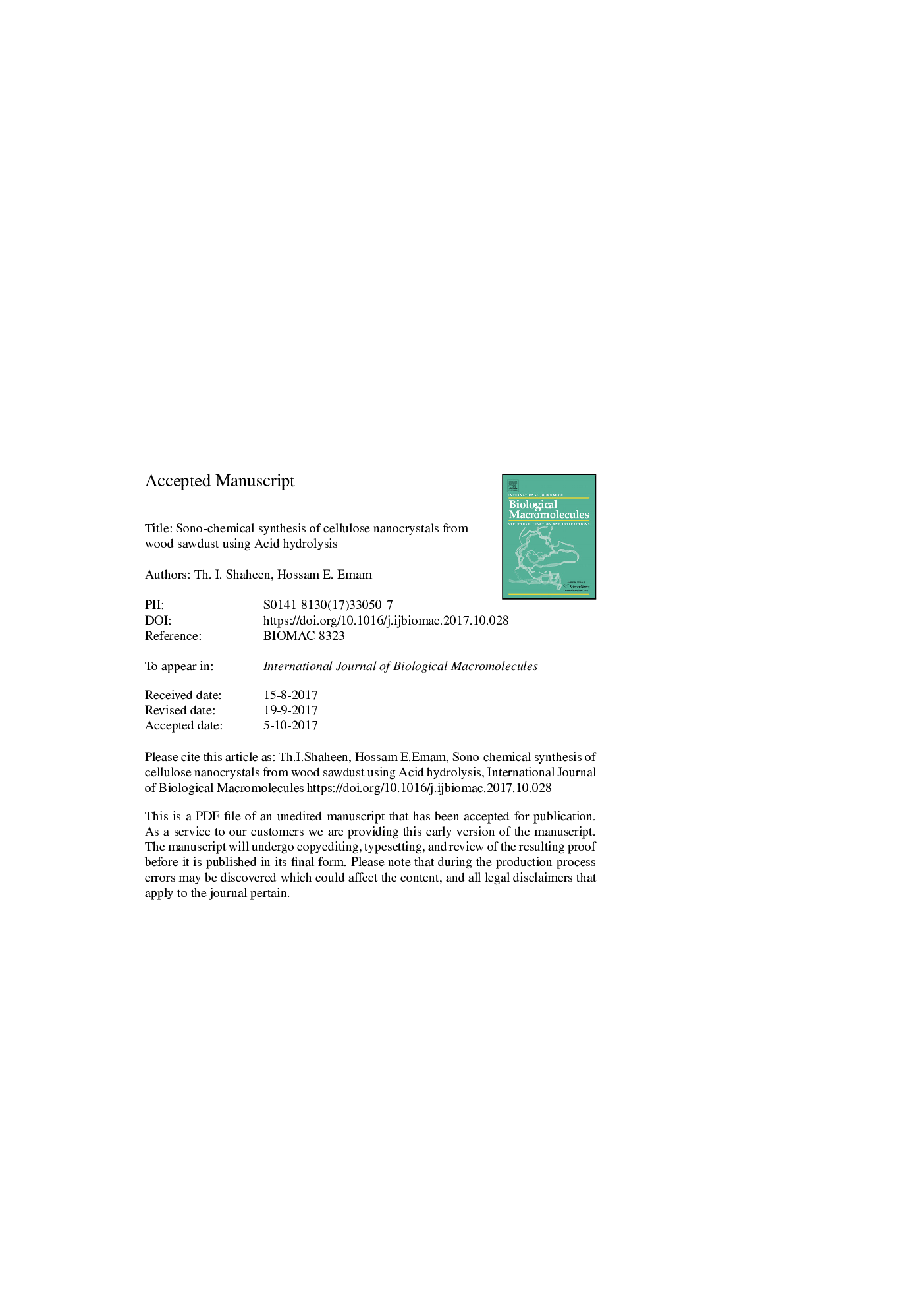| Article ID | Journal | Published Year | Pages | File Type |
|---|---|---|---|---|
| 8328715 | International Journal of Biological Macromolecules | 2018 | 24 Pages |
Abstract
Cellulose nanocrystal (CNC) is a unique material obtained from naturally occurring cellulose fibers. Owing to their mechanical, optical, chemical, and rheological properties, CNC gained significant interest. Herein, we investigate the potential of commercially non-recyclable wood waste, in particular, sawdust as a new resource for CNC. Isolation of CNC from sawdust was conducted as per acid hydrolysis which induced by ultrasonication technique. Thus, sawdust after being alkali delignified prior sodium chlorite bleaching, was subjected to sulfuric acid with concentration of 65% (w/w) at 60 °C for 60 min. After complete reaction, CNC were collected by centrifugation followed by dialyzing against water and finally dried via using lyophilization technique. The CNC yield attained values of 15% from purified sawdust. Acid hydrolysis mechanism exactly referred that, the amorphous regions along with thinner as well as shorter crystallites spreaded throughout the cellulose structure are digested by the acid leaving CNC suspension. The latter was freeze-dried to produce CNC powder. A thorough investigation pertaining to nanostructural characteristics of CNC was performed. These characteristics were monitored using TEM, SEM, AFM, XRD and FTIR spectra for following the changes in functionality. Based on the results obtained, the combination of sonication and chemical treatment was great effective in extraction of CNC with the average dimensions (diameter Ã length) of 35.2 ± 7.4 nm Ã 238.7 ± 81.2 nm as confirmed from TEM. Whilst, the XRD study confirmed the crystal structure of CNC is obeyed cellulose type I with crystallinity indexââ¼90%. Cellulose nanocrystals are nominated as the best candidate within the range studied in the area of reinforcement by virtue of their salient textural features.
Related Topics
Life Sciences
Biochemistry, Genetics and Molecular Biology
Biochemistry
Authors
Th. I. Shaheen, Hossam E. Emam,
